Table of contents
Introduction to Paralympic Archery
1. Overview of Archery in the Paralympics
Archery, one of the oldest sports known to humanity, combines skill, precision, and concentration. Its adaptation into the Paralympic Games has opened new avenues for athletes with disabilities, providing them with a platform to showcase their prowess and resilience. Paralympic archery is not merely a modified version of conventional archery; it is a distinct sport that emphasizes inclusivity, athleticism, and the spirit of competition.
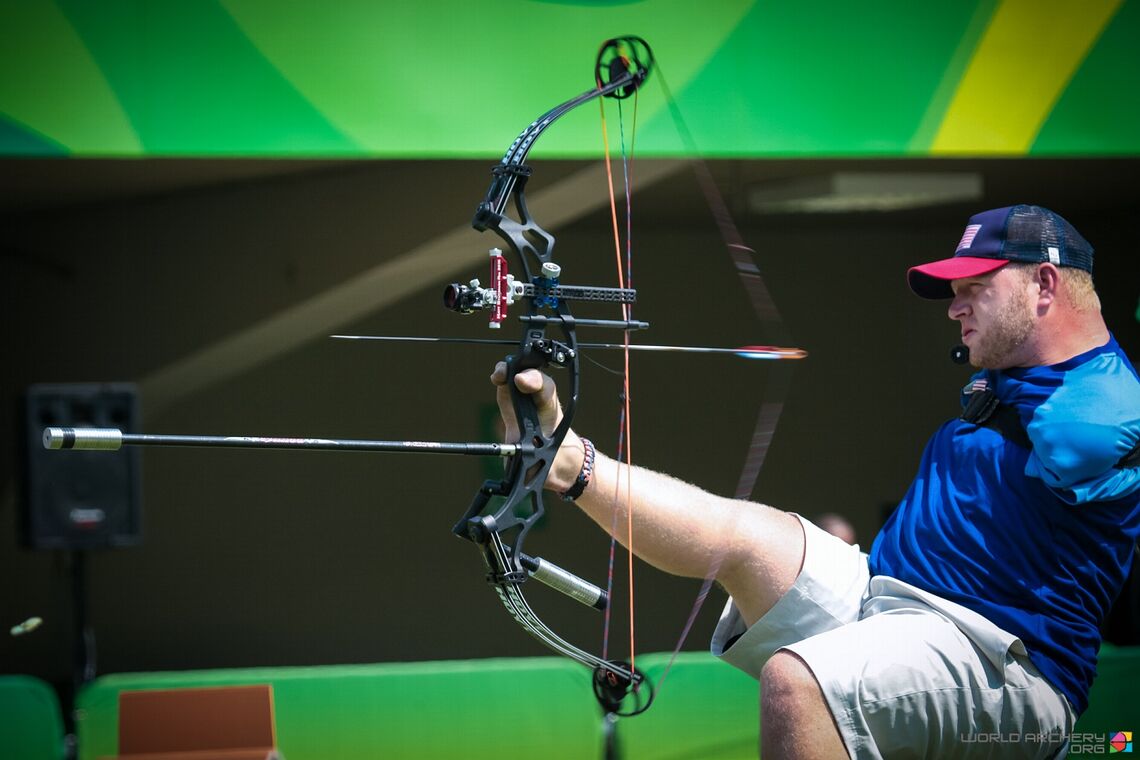
The sport involves shooting arrows at a target from a set distance, with points scored based on the accuracy of the shot. Like in the Olympic Games, athletes compete in different categories based on their abilities, ensuring a fair competition. The sport was introduced to the Paralympic Games in 1960 in Rome, making it one of the original events of the inaugural modern Paralympics. Since then, it has evolved significantly, incorporating advancements in technology and expanding its reach globally.
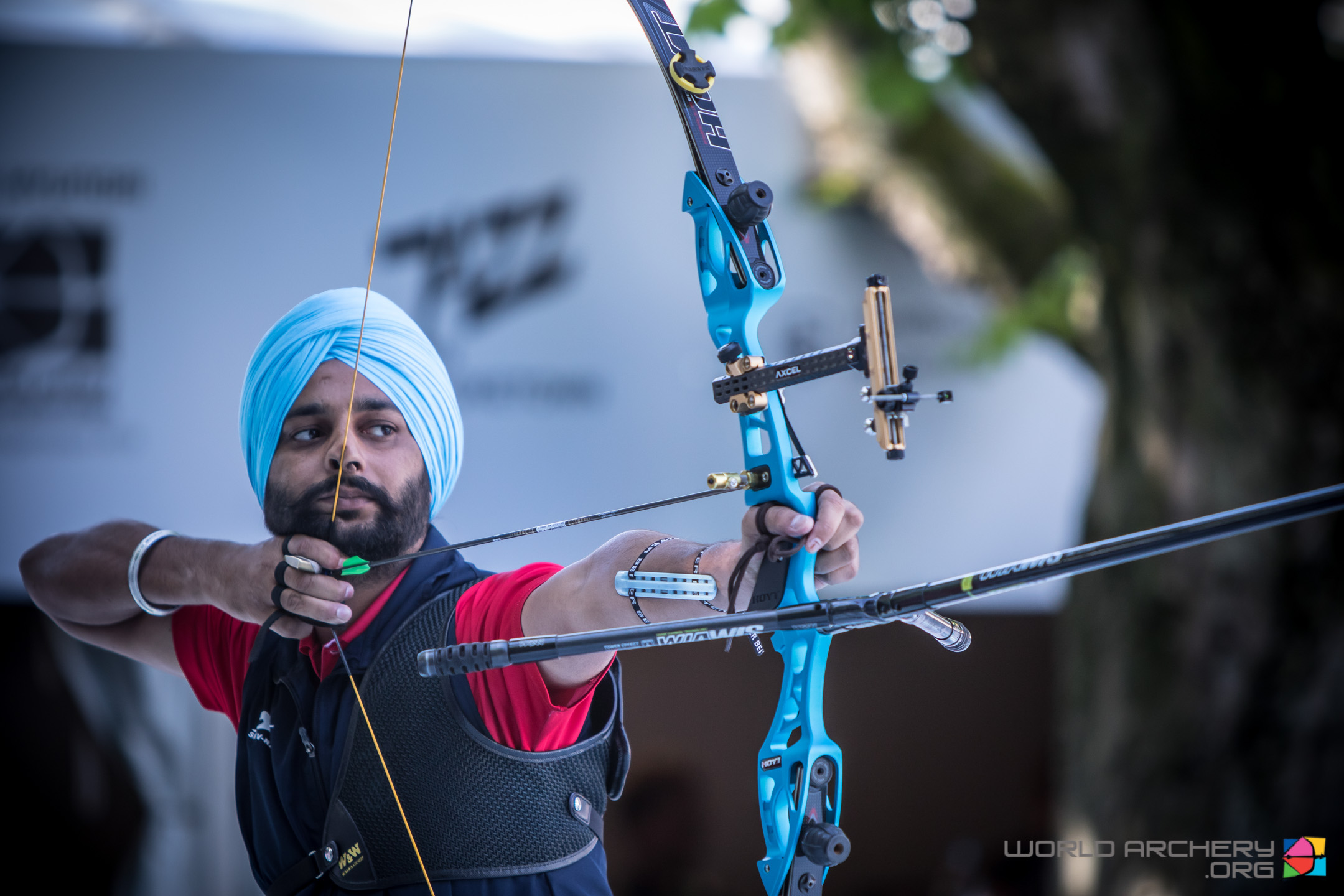
2. History and Evolution of Paralympic Archery
Paralympic archery has its roots in rehabilitation programs for war veterans. In the late 1940s, Dr. Ludwig Guttmann, a neurosurgeon at the Stoke Mandeville Hospital in England, introduced sports as a form of rehabilitation for spinal cord injury patients. Archery quickly gained popularity due to its adaptability and the minimal physical movement required to participate. As interest grew, archery was included as one of the main sports in the first official Paralympic Games in Rome, 1960.

Since its inclusion, the sport has undergone several transformations, adapting to the needs and capabilities of athletes. Technological advancements in equipment, such as lightweight bows, specialized release aids, and adaptive seating for athletes with lower limb impairments, have made the sport more accessible. The inclusion of various categories, such as open and W1 (for athletes with impairments that affect their legs and arms), has also ensured that athletes with a wide range of disabilities can compete at the highest level.

3. Categories and Classifications
To ensure fair competition, Paralympic archery has a detailed classification system based on the type and extent of an athlete’s disability. The primary categories are:
- Open Class: This category is for athletes with some degree of physical impairment who can shoot with a standard bow, either from a standing position or using a wheelchair. It includes athletes with lower limb impairments or minor balance issues.
- W1 Class: Athletes in this class have impairments affecting their legs and arms, which may require them to use a wheelchair. They can use compound bows with specific modifications such as mechanical release aids and peep sights.
- Visually Impaired Class (VI): Introduced as an experimental event in some competitions, this category includes athletes with visual impairments. They use tactile sights or assistants who provide verbal cues to align their shots.
These classifications ensure that athletes compete against others with similar levels of ability, making the competition more equitable and exciting.
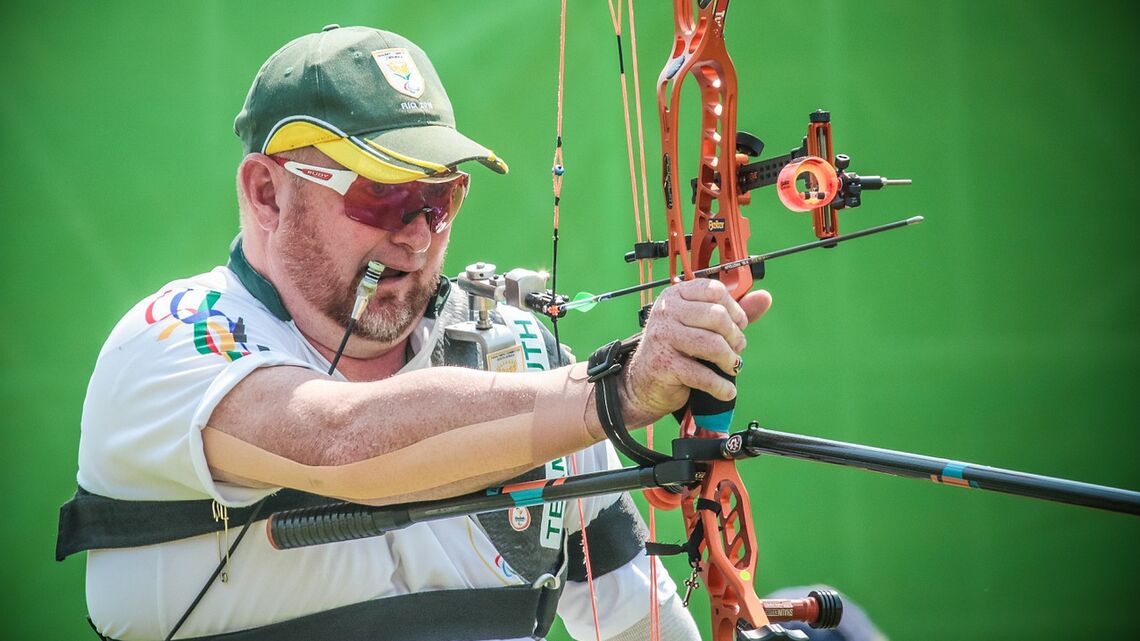
4. Rules and Scoring System
Paralympic archery follows rules similar to those used in Olympic archery, with adaptations to accommodate athletes’ needs. Competitors shoot a set number of arrows (typically 72) at targets placed 70 meters away in the recurve division and 50 meters in the compound division. The target is marked with ten concentric scoring rings, with points awarded based on where the arrow lands:
- The innermost circle (gold) scores 10 points.
- The following rings score progressively fewer points, down to the outermost circle, which scores 1 point.
The competition format includes both individual and team events, with athletes competing in elimination rounds leading to quarterfinals, semifinals, and finals. In team events, nations can field mixed-gender teams, promoting gender equality within the sport.

5. Growing Popularity and Global Reach
Paralympic archery has experienced a significant surge in popularity over the past decades. Its appeal lies in its accessibility and the fact that it allows athletes of all ages and backgrounds to compete. The sport’s governing body, World Archery (WA), along with the International Paralympic Committee (IPC), has been instrumental in promoting and developing the sport worldwide.
- Increased Participation: From its early days with a limited number of competitors, the sport now boasts hundreds of athletes from dozens of countries. This growth is a testament to the sport’s inclusivity and the international community’s efforts to break down barriers for athletes with disabilities.
- Media Exposure and Public Interest: The visibility of Paralympic archery has increased through media coverage, social media platforms, and dedicated sports networks. Events such as the World Para Archery Championships and the Paralympic Games are broadcasted to millions of viewers, raising the profile of the sport and inspiring new generations of athletes.
- Community Engagement: Local and national archery clubs have also played a crucial role in nurturing talent by offering accessible training facilities and coaching for people with disabilities. These grassroots initiatives ensure that aspiring athletes have the support and resources they need to pursue the sport professionally.

6. Importance of Paralympic Archery
The significance of Paralympic archery goes beyond sports; it symbolizes the breaking down of barriers and the celebration of human potential. Some of the key reasons why this sport is important are:
- Empowerment and Rehabilitation: Archery has therapeutic benefits, helping athletes regain motor skills, improve concentration, and boost their self-esteem. It provides a sense of purpose and achievement, contributing to the overall rehabilitation process.
- Inclusivity and Representation: The sport exemplifies inclusivity by allowing athletes with a wide range of disabilities to compete on a level playing field. This inclusivity fosters a sense of belonging and acceptance, challenging societal perceptions about people with disabilities.
- Promotion of Health and Fitness: Engaging in archery requires physical strength, mental focus, and discipline. It promotes a healthy lifestyle among participants, encouraging regular exercise and a balanced diet to maintain peak performance.
- Role Models and Inspiration: Paralympic archers serve as role models for people with disabilities, showcasing what can be achieved through determination and hard work. Their stories of overcoming adversity inspire others to pursue their passions, regardless of physical limitations.
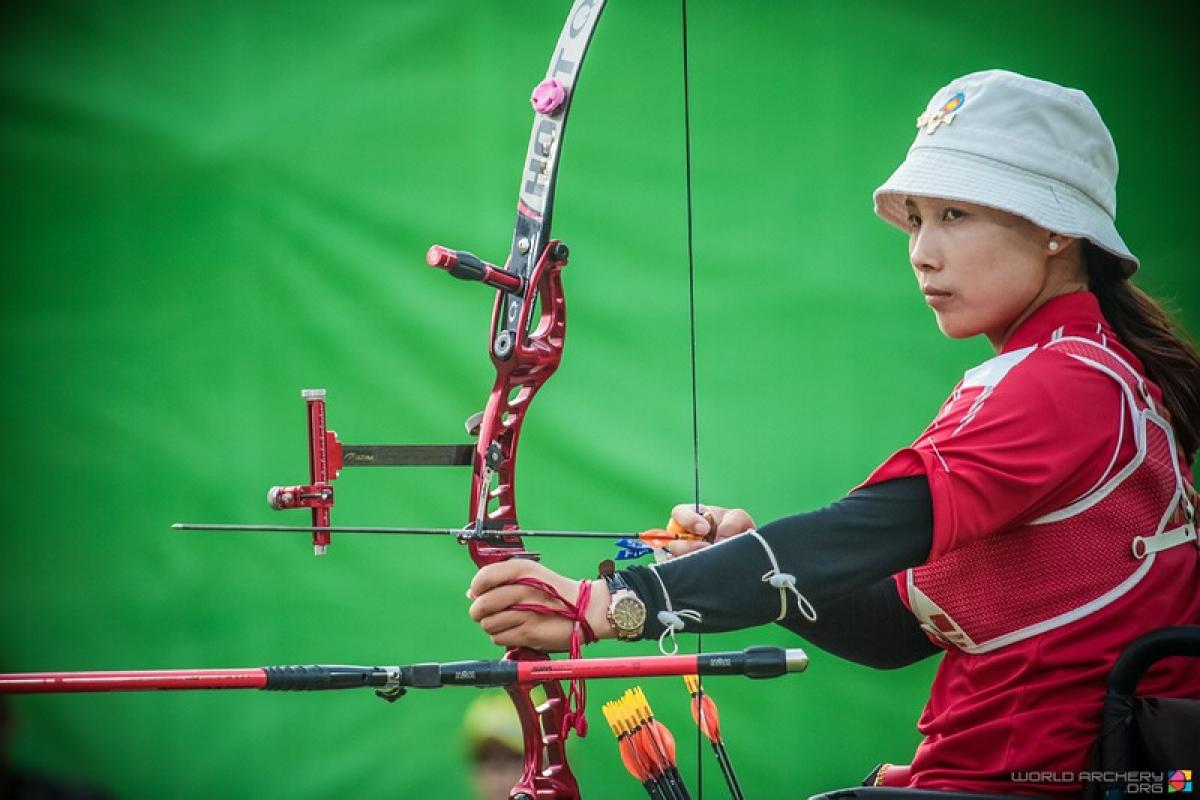
Paralympic Archery 2024: An Overview
1. Introduction to the 2024 Paralympics and the Role of Archery
The 2024 Summer Paralympics, set to take place in Paris, France, promise to be a spectacular showcase of athletic prowess, determination, and inclusivity. Archery, one of the original sports included in the Paralympics, will again play a central role in the games. This sport is a testament to the power of precision, focus, and resilience, allowing athletes with physical disabilities to compete on the global stage. The 2024 Paralympics will not only provide a platform for seasoned archers to display their skills but will also inspire new generations of athletes and spectators with stories of perseverance and excellence.
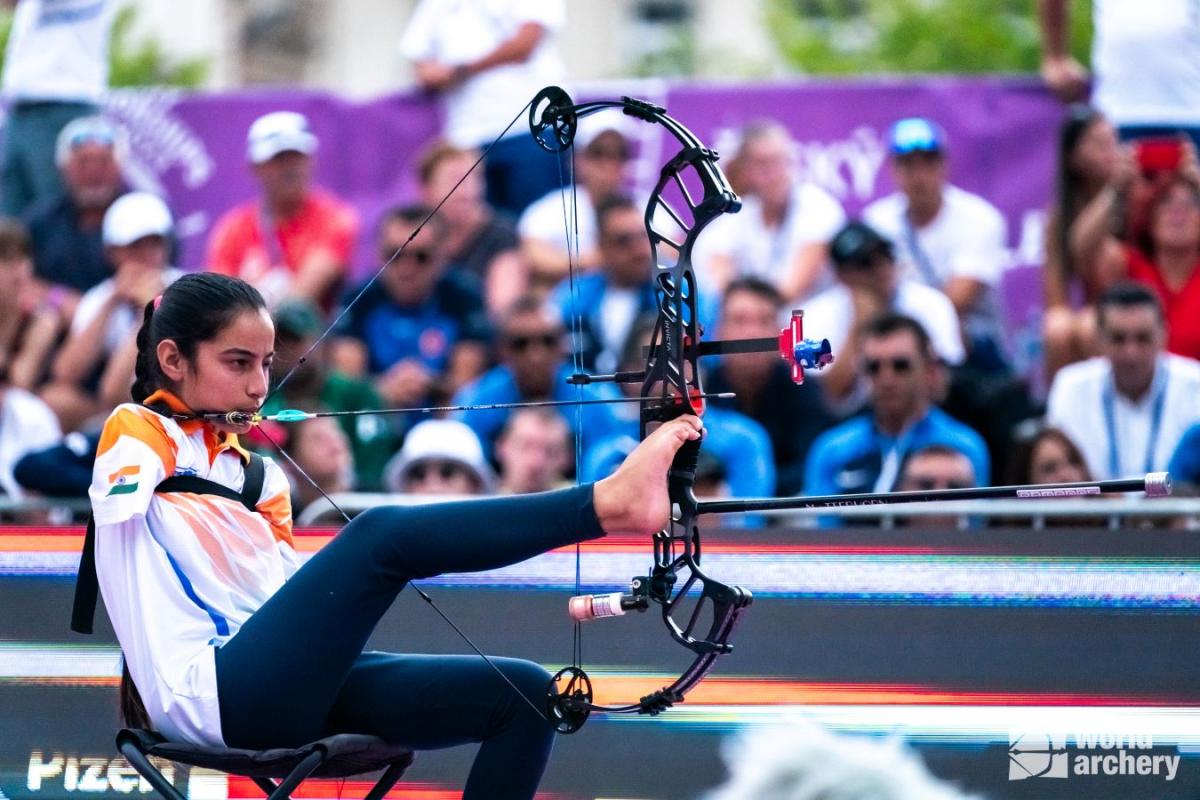
Archery’s inclusion in the 2024 Paralympic Games underscores its historical significance and enduring appeal. From its roots as a rehabilitation activity for injured war veterans at Stoke Mandeville Hospital in the 1940s to its debut at the Rome Paralympics in 1960, archery has evolved into a dynamic and highly competitive sport. The 2024 Games will continue this legacy, featuring state-of-the-art equipment, a world-class venue, and a diverse lineup of competitors from around the globe.

2. Venue: Esplanade des Invalides
One of the most iconic aspects of the 2024 Paralympic archery events will be their location. The competitions will be held at the Esplanade des Invalides, a historic site adjacent to the 17th-century Hotel des Invalides in Paris. This setting offers a breathtaking view of the Eiffel Tower, blending the rich cultural heritage of France with the modern spirit of the Paralympic Games. The choice of venue not only emphasizes the grandeur of the event but also highlights Paris’s commitment to providing an inclusive and memorable experience for athletes and spectators alike.

The Esplanade des Invalides will be transformed into a world-class competition area, equipped with all necessary facilities to accommodate athletes, officials, and the media. The location’s central position in Paris ensures that the sport will receive substantial attention, potentially drawing large crowds and extensive media coverage. This visibility will help further promote Paralympic archery and celebrate the achievements of the athletes who compete.
3. Events and Competition Format
In 2024, Paralympic archery will feature a total of nine events, carefully designed to provide equal opportunities for men, women, and mixed-gender teams:
- Men’s Events: Three separate events will cater to different classifications and bow types, ensuring that athletes with various impairments can compete fairly.
- Women’s Events: Similarly, three women’s events will allow female archers to showcase their skills, competing with either recurve or compound bows.
- Mixed Open Teams: Three mixed-gender events will bring together male and female archers, promoting gender equality and fostering a spirit of collaboration.

These events will see up to 140 archers from across the globe competing for medals. The format typically begins with a ranking round, where archers shoot a set number of arrows to determine their seeding. This is followed by cumulative scoring elimination matches, where archers face off in head-to-head contests until the winners emerge. The competition structure ensures that every match is intense, with athletes striving for accuracy and consistency under pressure.
4. Athletes and Classifications
The 2024 Paralympic archery competition will include a diverse range of athletes, showcasing the inclusivity of the sport. Both men and women with physical disabilities, such as spinal cord injuries, limb loss, or other mobility impairments, will have the opportunity to compete. Athletes can either stand or use a wheelchair, depending on their capabilities and classification.
The classification system in Paralympic archery ensures that athletes compete against others with similar functional abilities, promoting fairness and enhancing the competitive spirit. The primary categories are:
- Open Class: For athletes with some degree of physical impairment, allowing the use of both recurve and compound bows.
- W1 Class: For athletes with more severe impairments affecting both arms and legs, often requiring the use of a wheelchair. This class allows compound bows with specific modifications.

These classifications, combined with the high level of competition, make Paralympic archery one of the most compelling and closely followed sports in the Games.
5. Equipment and Scoring
Paralympic archers use specialized equipment to suit their needs and enhance their performance. Competitors can use recurve or compound bows, with modifications such as adaptive release aids, tactile sights, or customized seating arrangements for those with balance issues. This equipment ensures that all athletes can compete effectively, regardless of their physical limitations.

The scoring system in Paralympic archery is straightforward but demands precision. During the ranking round, archers shoot a predetermined number of arrows at a target positioned 50 to 70 meters away. The target features ten concentric scoring rings, with the innermost circle (gold) scoring the highest points (10) and the outer rings scoring progressively fewer points down to one. In elimination matches, archers shoot in a series of ends, with the cumulative score determining the winner. Ties can be particularly thrilling, often decided by a single arrow shoot-off, where the archer closest to the center wins.
6. Key Highlights and Expectations for 2024
The 2024 Paralympic archery competition is set to deliver several exciting highlights:
- Record-Breaking Performances: In past games, Paralympic archers have consistently pushed the boundaries of what is possible, setting new world records. With advancements in training techniques and equipment, 2024 promises to be another record-breaking year, showcasing the exceptional skill and dedication of these athletes.
- Close Contests: Archery is known for its nail-biting finishes, and the 2024 Games will likely feature numerous matches decided by the narrowest of margins. The head-to-head elimination format ensures that every shot counts, making for a thrilling spectator experience.
- Diverse Representation: Athletes from a wide range of countries are expected to participate, reflecting the global appeal and inclusivity of Paralympic archery. This diversity enriches the competition and provides an opportunity to celebrate different cultures and stories of perseverance.

7. What to Expect in Future Competitions
The future of Paralympic archery is bright, with several trends pointing toward continued growth and evolution:
- Continued Growth: As awareness of Paralympic sports increases, more athletes are likely to take up archery, expanding the pool of talent and enhancing the level of competition. National and international initiatives to promote sports for people with disabilities will also play a crucial role in this growth.
- Technological Advancements: Innovations in equipment and training methods will continue to improve the accuracy and accessibility of archery for athletes with disabilities. New materials, adaptive devices, and data-driven training tools could further enhance performance, making the sport even more competitive.
- Inspiring Stories: The Paralympic Games are renowned for showcasing incredible stories of athletes overcoming adversity. The 2024 Games will undoubtedly feature such narratives, inspiring millions of viewers around the world. These stories not only highlight the strength and resilience of Paralympic athletes but also encourage others to pursue their passions, regardless of physical limitations.
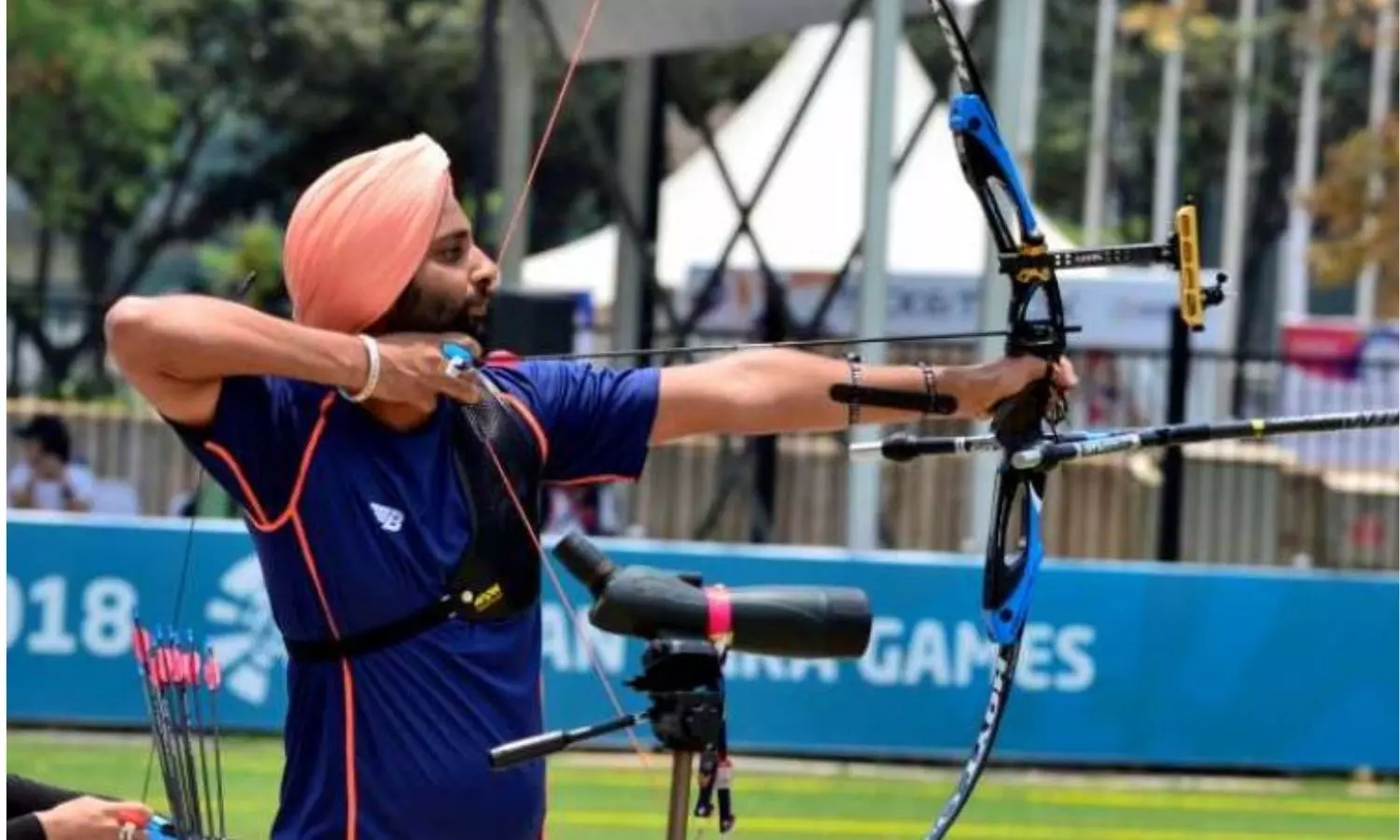
Historical Background of Archery in the Paralympics
1. Origins of Paralympic Archery
Archery has been a part of human history for thousands of years, originally used for hunting and warfare before evolving into a popular recreational activity and competitive sport. The sport’s journey into the Paralympic movement, however, began in the mid-20th century as a form of rehabilitation for injured soldiers. Following World War II, Dr. Ludwig Guttmann, a pioneering neurosurgeon at the Stoke Mandeville Hospital in England, introduced sports as a method of therapy for spinal cord injury patients. Archery, with its focus on precision and control, was found to be highly beneficial for improving motor skills and mental focus.

In 1948, Dr. Guttmann organized the first Stoke Mandeville Games, a precursor to the modern Paralympic Games, which included archery among its events. The success of these games demonstrated the value of sports in rehabilitation and paved the way for the inclusion of archery in international competitions for athletes with disabilities. This led to archery being one of the original sports featured in the inaugural Paralympic Games in Rome in 1960.
2. Introduction to the Paralympic Games: Rome 1960
The Rome 1960 Paralympic Games marked a significant milestone in the history of sports for athletes with disabilities. These were the first official Paralympic Games, held immediately after the Rome Summer Olympics, and archery was featured as a core event. The inclusion of archery not only underscored its growing popularity but also highlighted its therapeutic benefits for people with physical impairments.

In these early years, the sport was relatively small in scale, with only a few participating countries and limited categories based on the athletes’ physical abilities. However, the foundation was laid for archery’s future development in the Paralympic movement. The success of archery in the 1960 Games helped solidify its place as a mainstay in the Paralympics, encouraging other nations to promote and support the sport.
3. Growth and Expansion: 1960s to 1980s
The following decades saw a steady growth in the popularity and recognition of Paralympic archery. As the Paralympic movement expanded, so did the number of participating athletes and countries in archery competitions. The sport was included in every subsequent Paralympic Games, gradually evolving in terms of organization, rules, and classification systems to ensure fair competition among athletes with varying types of disabilities.

Key developments during this period included the introduction of more standardized equipment, clearer classification categories, and the establishment of official rules that mirrored those of the Olympic archery competitions but with necessary adaptations. This alignment helped to raise the sport’s profile and brought a level of professionalism that enhanced its credibility and appeal.
4. Significant Milestones in the 1990s
The 1990s marked a period of significant evolution for Paralympic archery, characterized by milestones that shaped the modern face of the sport. One of the most notable developments was the adoption of the compound bow in the 1996 Atlanta Paralympic Games. This inclusion allowed athletes with greater impairments to participate, as compound bows require less physical strength to operate due to their pulley system, which makes them easier to draw and hold.
The introduction of the compound bow expanded the range of athletes who could compete and added a new dimension to the sport. It also led to the establishment of separate events and categories for recurve and compound bows, each with its own set of rules and scoring systems.

Another significant milestone during this period was the increased involvement of international governing bodies. The International Archery Federation (FITA), now known as World Archery (WA), began working closely with the International Paralympic Committee (IPC) to standardize the sport’s rules and classifications globally. This partnership helped to ensure consistency across international competitions and fostered the development of archery programs for athletes with disabilities worldwide.
5. Modern Era: 2000s to Present
The modern era of Paralympic archery has been defined by increased professionalism, technological advancements, and greater global reach. From the 2000 Sydney Paralympics onward, the sport saw a significant rise in participation and media coverage. The Sydney Games, in particular, were notable for their high level of organization and the inclusion of more elaborate classification systems, which ensured that athletes of all abilities had the opportunity to compete fairly.
Technological advancements in equipment have played a crucial role in the evolution of the sport. Modern bows, both recurve and compound, are now made from lightweight materials like carbon fiber and aluminum, making them easier to handle and more precise. Adaptive devices, such as mouth tabs for archers who cannot use their hands and specially designed wheelchairs, have further enhanced accessibility, allowing athletes with a wider range of disabilities to participate.
In recent years, there has also been a concerted effort to promote gender equality within Paralympic archery. Mixed-gender team events have become a regular feature, emphasizing inclusivity and showcasing the sport’s appeal to both men and women. The increasing number of women competing at the highest levels highlights the growing popularity of the sport among female athletes.
6. Key Moments and Records
Paralympic archery has witnessed numerous memorable moments and record-breaking performances over the years. Some of the key highlights include:
- First Female Paralympic Archer: The inclusion of female archers in the Paralympics has been a significant achievement. In the early years, female participation was limited, but today, women compete on equal footing with men in all categories.
- World Records: The sport has seen a series of world records set and broken at the Paralympic Games. For example, at the 2016 Rio Paralympics, Iranian archer Zahra Nemati, who won gold in the women’s individual recurve open category, became a symbol of resilience and excellence, having also competed in the Olympics.
- Introduction of Visually Impaired Archery: In recent years, the Paralympic Games have experimented with including events for visually impaired archers, using tactile sights or verbal instructions to aim. This development reflects the ongoing commitment to expanding the sport’s inclusivity.
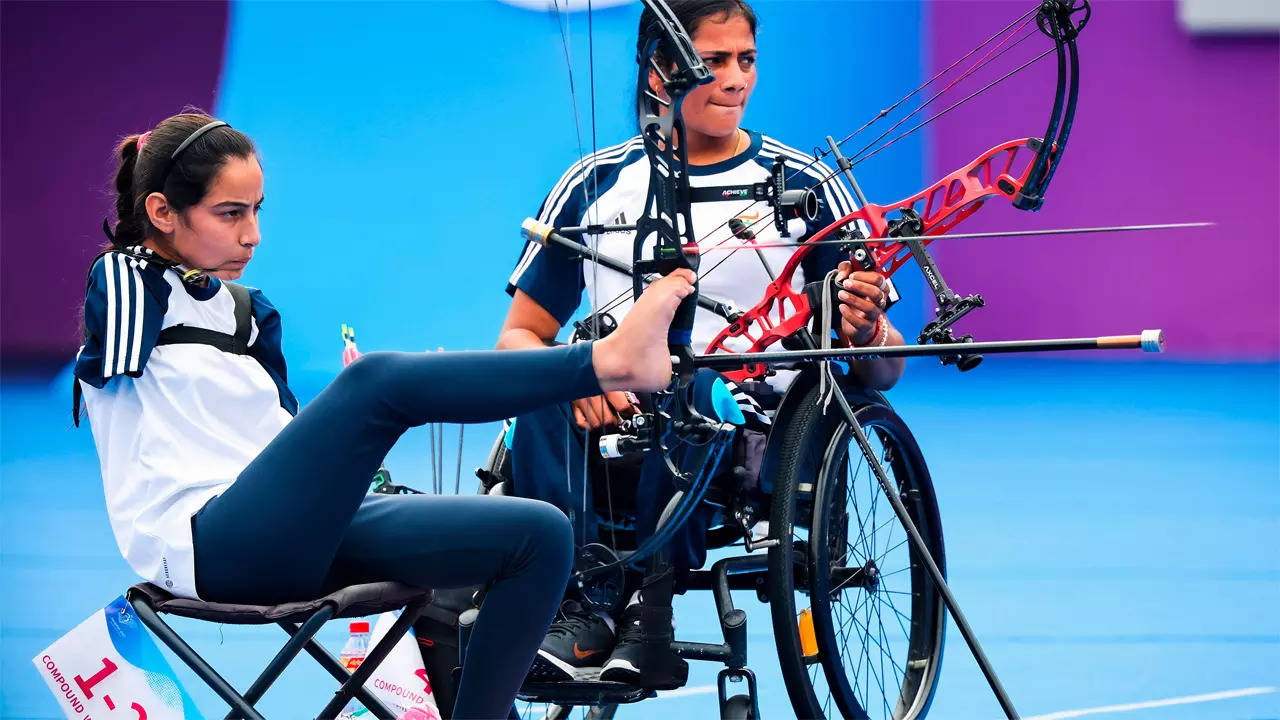
7. The Future of Paralympic Archery
Looking ahead, Paralympic archery is poised for further growth and development. Several factors will shape its future trajectory:
- Technological Innovation: Continued advancements in adaptive equipment and training techniques will likely enhance the performance of athletes and expand the sport’s accessibility. Innovations such as augmented reality training aids and personalized coaching programs could further elevate the competitive standard.
- Global Participation: Efforts to promote Paralympic archery in developing countries will be crucial for increasing global participation. Initiatives to provide training resources, equipment, and support for emerging athletes will help bring more nations into the fold and diversify the competitive landscape.
- Increased Media Exposure: As interest in Paralympic sports continues to grow, media coverage of events like the Paralympic archery competitions will likely increase. Enhanced visibility will inspire new generations of athletes and elevate the sport’s profile.
- Continued Emphasis on Inclusivity: The inclusion of more events for athletes with different types of disabilities, including those with visual impairments, will ensure that Paralympic archery remains a model of inclusivity. This focus will encourage more people to take up the sport and recognize its value beyond just competition.
Spotlight on Indian Paralympic Archers
1. Overview of India’s Participation and Achievements in Paralympic Archery
India’s journey in Paralympic archery is a testament to the country’s growing focus on sports for athletes with disabilities. Although India’s participation in this sport has been relatively recent compared to some other nations, Indian archers have consistently demonstrated their dedication, skill, and competitive spirit on the international stage. This commitment reflects the broader development of Paralympic sports in India, supported by increasing recognition, improved training facilities, and more significant investment in athlete development.
India first entered the Paralympic archery scene with limited resources and exposure. Over time, the country’s archers have gained experience, competing against the best in the world and gradually climbing the ranks. While Indian archers have yet to secure a gold medal in Paralympic archery, their consistent performances, regular appearances at the Games, and determination to succeed highlight India’s potential in this field. The nation’s participation in these events underscores a strong commitment to fostering talent among athletes with disabilities and encouraging their involvement in competitive sports.
2. Notable Indian Athletes in Paralympic Archery
Several Indian archers have made a significant impact in the Paralympic archery scene, earning recognition for their performances and inspiring future generations of athletes. Some of these notable athletes include:
- Deepa Malik: Although primarily known for her achievements in athletics, particularly in shot put and discus, Deepa Malik has also competed in archery. Her involvement in multiple sports showcases her versatility and determination. Malik became the first Indian woman to win a Paralympic medal, securing a silver in shot put at the 2016 Rio Paralympics. Her foray into archery is a testament to her all-around athletic prowess and commitment to promoting Paralympic sports in India.
- Rajeev Singh: A seasoned archer with considerable experience, Rajeev Singh has represented India at multiple Paralympic Games. Known for his steady performances and dedication, Singh has been a mainstay in the Indian Paralympic archery team. His involvement in the sport highlights his skill and consistency, serving as an inspiration for aspiring archers in the country.
- Jyoti Balyan: As one of the promising talents in Indian Paralympic archery, Jyoti Balyan has shown great potential to become a future star. Her performances in national and international competitions have garnered attention, and she continues to work towards achieving success at the Paralympic level. Balyan’s dedication and potential mark her as a key figure in the future of Indian archery.
These athletes have not only represented India on the global stage but have also paved the way for other athletes with disabilities to pursue sports, demonstrating that physical limitations are no barrier to achieving excellence.
3. Achievements in Paralympic Archery
While India has yet to win a gold medal in Paralympic archery, the country has recorded several notable achievements that reflect the growing strength and depth of its archery program:
- Multiple Paralympic Appearances: Indian archers have participated regularly in Paralympic archery competitions, highlighting a sustained commitment to the sport. This consistent participation indicates the efforts of Indian sports authorities to ensure representation and competition at the highest levels.
- Consistent Performances: Indian archers have consistently placed well in their respective events, showcasing their competitive spirit and ability to compete against some of the world’s best athletes. Although medals have been elusive, the performances of Indian archers have demonstrated that they are capable of holding their own on the international stage.
- Rising Talent: The emergence of young and talented archers suggests a bright future for Indian Paralympic archery. Initiatives by organizations such as the Paralympic Committee of India (PCI) and partnerships with archery associations have led to the identification and nurturing of promising athletes. These efforts are likely to pay off in the coming years, with more Indian archers competing for top honors at the Paralympics and other international events.
4. Supporting Factors for Growth
Several factors have contributed to the growth and development of Paralympic archery in India, setting the stage for future success:
- Improved Training Facilities: Over the years, India has invested in better training facilities and equipment for its Paralympic athletes. Specialized coaching, modern archery ranges, and access to adaptive equipment have helped Indian archers improve their skills and compete more effectively.
- Increased Awareness and Support: Greater awareness of Paralympic sports, driven by media coverage and advocacy from prominent athletes like Deepa Malik, has led to increased public and governmental support. This support is crucial for funding, resources, and the overall development of sports programs for athletes with disabilities.
- Talent Identification Programs: Initiatives to identify and nurture talent at the grassroots level have played a significant role in bringing more athletes into the sport. These programs focus on scouting athletes from various regions, including rural areas, ensuring that talented archers have the opportunity to train and compete.
- Mentorship and Role Models: Established athletes like Deepa Malik and Rajeev Singh serve as role models for younger athletes, providing mentorship and inspiration. Their achievements demonstrate what is possible with hard work and dedication, motivating upcoming archers to aim high.
5. Challenges and Future Prospects
Despite the positive developments, Indian Paralympic archery still faces several challenges that need to be addressed to ensure sustained growth and success:
- Funding and Sponsorship: While there has been progress, securing adequate funding and sponsorship remains a challenge. More financial support is needed to provide top-quality training, equipment, and opportunities for international competition exposure.
- Coaching and Technical Expertise: Expanding the pool of experienced coaches with specialized knowledge in adaptive archery is crucial. Continuous training and development programs for coaches will help improve the technical skills of Indian archers.
- Infrastructure and Accessibility: Ensuring that training facilities are accessible to athletes with disabilities across the country is essential. This includes building more accessible archery ranges and providing transport and accommodation options that cater to the needs of these athletes.
Looking ahead, the future of Indian Paralympic archery appears promising. The dedication of athletes, support from sports authorities, and growing public interest are all positive indicators of continued progress. With ongoing investment in training, infrastructure, and talent development, Indian archers are likely to achieve greater success at the Paralympic level, potentially winning their first gold medal in the near future. The rise of young talents like Jyoti Balyan further signifies the potential for India to become a strong contender in Paralympic archery on the global stage.
Rising Star: Sheetal Devi
1. Introduction: A Remarkable Journey
Sheetal Devi, a young Indian para-archer, has captured the world’s attention with her extraordinary talent and unwavering spirit. Born without arms, she has defied all odds to become a formidable competitor in the sport of archery, where precision and skill are paramount. Sheetal’s journey is a testament to the power of determination, resilience, and the indomitable human spirit. Her story not only highlights her personal achievements but also serves as a beacon of hope and inspiration for people with disabilities, athletes, and individuals around the globe.

2. Overcoming Challenges: Sheetal’s Early Life and Introduction to Archery
Sheetal Devi was born without arms, a condition that presented her with numerous challenges from an early age. Growing up in a society where people with disabilities often face significant obstacles, Sheetal’s path was not easy. Despite these challenges, she exhibited a strong will and an optimistic outlook. Her supportive family and community played a crucial role in nurturing her abilities and encouraging her to pursue her dreams.
Sheetal’s introduction to archery was a turning point in her life. Drawn to the sport’s precision and focus, she began to train with the support of local coaches who recognized her potential. Initially, learning archery without the use of arms was a significant challenge. However, Sheetal’s innovative approach to holding and releasing the bow using her feet quickly became a hallmark of her training. Her adaptability and determination allowed her to master the skills required for archery, and she soon began participating in local competitions, catching the attention of national coaches and the wider archery community.
3. Preparation for the 2024 Paralympics
As Sheetal Devi sets her sights on the 2024 Paralympics in Paris, she has embarked on a rigorous training program designed to enhance her skills and prepare her for the challenges of international competition. Her preparation for the Games involves a holistic approach that includes physical conditioning, technical training, and mental fortitude:
- Physical Conditioning: Sheetal’s training regimen includes strength and flexibility exercises tailored to improve her posture, balance, and the precision needed for archery. By working with specialized trainers, she ensures that her physical conditioning complements her shooting technique, allowing for optimal performance.
- Technical Drills: Sheetal focuses extensively on technical drills to refine her shooting accuracy and consistency. These drills involve practicing her unique shooting method, which relies on her feet to handle the bow and release the arrow. Continuous practice helps her improve her aim, control, and timing, essential components of success in competitive archery.
- Mental Preparation: Competing at the highest levels requires more than just physical skill; mental resilience is equally crucial. Sheetal works with sports psychologists to develop mental strategies that help her stay calm under pressure, maintain focus during competition, and visualize success. Her mental preparation includes techniques for concentration, stress management, and goal-setting, all aimed at enhancing her performance on the global stage.
- Strategic Planning with Coaches: Sheetal has been working closely with her coaches to develop competition strategies tailored to her strengths. Analyzing her competitors, refining her shooting style, and preparing for different environmental conditions are part of her comprehensive preparation plan. This strategic planning is crucial for achieving consistency and top performance during the Paralympic Games.
4. Achievements and Accolades Leading Up to the 2024 Games
Sheetal Devi’s rise in the world of para-archery has been marked by numerous achievements that underscore her exceptional talent and dedication. These accolades have established her as one of the leading figures in the sport and have set high expectations for her performance at the 2024 Paralympics:
- Arjuna Award for Para-Archery: Sheetal Devi’s outstanding contribution to para-archery was recognized when she received the prestigious Arjuna Award. This honor, one of India’s highest sports accolades, is given to athletes who have shown consistent excellence in their sport. The award is a testament to Sheetal’s skill, hard work, and impact on para-archery in India.
- Gold Medals at the Asian Para Games: Sheetal has demonstrated her dominance in the Asian region by winning multiple gold medals at the Asian Para Games. These victories highlight her ability to compete at the highest levels and her consistency in delivering top performances. Her success at these events has solidified her reputation as one of the leading para-archers in Asia.
- World Record Holder: Sheetal Devi’s exceptional abilities have led her to break world records in para-archery. Holding a world record is a significant achievement that reflects her skill, precision, and dedication to the sport. These records not only bring recognition to Sheetal but also shine a spotlight on the potential of athletes with disabilities, encouraging more participation and interest in para-archery.
- National and International Recognition: Beyond her medals and awards, Sheetal has received widespread recognition and admiration from the archery community and the public. Her story has been featured in various media outlets, bringing attention to her journey and inspiring others to overcome their own challenges. She has become a role model for young athletes, particularly those with disabilities, showing that determination and hard work can lead to success.
5. Impact and Inspiration
Sheetal Devi’s story resonates far beyond the world of sports. As a young woman who has overcome significant physical challenges to excel in a demanding and competitive field, she embodies the spirit of resilience and perseverance. Her achievements have inspired countless individuals, both within India and around the world, to pursue their passions despite facing adversity.
Her success also highlights the importance of inclusivity in sports. By competing at the highest levels, Sheetal challenges societal perceptions of disability, demonstrating that athletes with disabilities can achieve greatness and compete on equal terms with their peers. Her journey underscores the need for support systems, accessible training facilities, and opportunities for athletes with disabilities, encouraging further development in these areas.
6. Looking Ahead: The 2024 Paralympics
As Sheetal Devi prepares to compete in the 2024 Paralympics, the world eagerly awaits her performance. Her participation in the Games not only marks a personal milestone but also represents the progress and potential of Indian para-archery on the global stage. With her impressive track record, Sheetal is a strong contender for a podium finish, and her performance will undoubtedly be closely followed by fans and supporters.
Sheetal’s journey to the Paralympics serves as a powerful reminder of the strength of the human spirit. Her dedication to her sport, her ability to innovate and adapt, and her relentless pursuit of excellence make her a shining example of what can be achieved through determination and hard work. As she takes aim at the targets in Paris, Sheetal Devi will carry with her the hopes and dreams of millions, proving that with the right mindset, even the most challenging obstacles can be overcome.
Sarita Devi: A Veteran in Paralympic Archery
1. Introduction: A Pioneer in Indian Para-Archery
Sarita Devi stands as a prominent figure in the world of para-archery, both in India and globally. Her journey in the sport is a story of perseverance, skill, and breaking barriers. Over the years, Sarita has become a trailblazer in Indian para-archery, inspiring countless individuals with disabilities to pursue their passions in sports. With her unwavering dedication and exceptional archery skills, she has carved a niche for herself, earning respect and recognition for her contributions to the sport.
2. Background and Early Challenges
Sarita Devi’s journey into the world of para-archery began under challenging circumstances. Growing up with a physical disability, she faced numerous obstacles, both societal and personal. Despite these hurdles, Sarita was determined to excel and lead a fulfilling life. Her introduction to archery came through a rehabilitation program aimed at encouraging people with disabilities to engage in sports. What began as a therapeutic activity soon turned into a passion, and Sarita dedicated herself to mastering the sport.
With limited access to training facilities and resources, Sarita’s early years in archery were marked by hard work and persistence. Her dedication did not go unnoticed, and soon she found support from local sports organizations and coaches who recognized her talent. This support, combined with her inner drive, paved the way for her to compete at higher levels, eventually leading to her participation in national and international competitions.
3. Accomplishments in Para-Archery
Sarita Devi’s accomplishments in para-archery are a testament to her skill, determination, and dedication. Throughout her career, she has achieved remarkable success, making her one of the most respected and decorated para-archers in India. Some of her notable achievements include:
- Multiple Paralympic Medals: Sarita Devi’s consistent performances at the Paralympic Games have earned her several medals, showcasing her ability to compete at the highest level. Her achievements in these prestigious competitions reflect her exceptional talent and dedication to the sport. These medals not only bring her personal glory but also inspire other athletes with disabilities to aim for excellence.
- World Champion: Sarita has claimed the coveted title of world champion in para-archery, demonstrating her dominance in the sport. Becoming a world champion is a significant milestone, marking her as one of the best para-archers in the world. Her victory on the global stage underscores her technical prowess, mental resilience, and competitive spirit.
- Asian Games Medalist: Sarita’s success is not limited to the Paralympic Games; she has also excelled at the Asian Games, consistently winning medals and solidifying her reputation as a regional powerhouse. Her performances at these events highlight her consistency and ability to perform under pressure, making her a formidable competitor in any tournament.
These accolades are a reflection of Sarita Devi’s hard work, strategic planning, and the support of her coaches and mentors. Her achievements have not only brought her recognition but have also elevated the profile of para-archery in India, encouraging more participation in the sport.
4. Journey to the 2024 Paralympics
As Sarita Devi prepares for the 2024 Paralympics in Paris, she brings with her a wealth of experience and a proven track record. Her journey to the upcoming Games has been marked by unwavering dedication, rigorous training, and a relentless pursuit of excellence. Sarita’s preparation involves a comprehensive approach, focusing on physical conditioning, technical refinement, and mental resilience:
- Physical Conditioning: At this stage in her career, Sarita understands the importance of maintaining peak physical condition. Her training regimen includes strength training, flexibility exercises, and endurance workouts. These sessions are designed to enhance her overall fitness, improve her posture, and maintain the stability required for accurate shooting.
- Technical Refinement: Despite her experience, Sarita continues to refine her technique. Working closely with her coaches, she focuses on perfecting her form, release, and follow-through. Technical drills are an integral part of her training, allowing her to fine-tune her skills and adapt to any changes in competition conditions or equipment.
- Mental Resilience: Competing at the Paralympics requires not only physical skill but also mental toughness. Sarita’s mental preparation includes visualization techniques, mindfulness practices, and sessions with sports psychologists. These strategies help her maintain focus, manage competition stress, and enhance her ability to perform under pressure.
- Strategic Planning: Sarita and her coaching team are developing strategies tailored to her strengths and potential opponents. This planning includes analyzing previous performances, studying competitors’ techniques, and preparing for various environmental conditions. A well-thought-out strategy is key to maximizing her chances of success at the Paralympics.
5. What to Expect from Sarita Devi in the 2024 Paralympics
Given Sarita Devi’s impressive background and consistent performance, she is expected to be a strong contender for a medal at the 2024 Paralympics. Her vast experience and proven track record in international competitions make her a formidable opponent. Sarita’s ability to remain calm under pressure, combined with her technical proficiency, will be critical factors in her performance.
- Experience as an Advantage: Sarita’s years of experience give her an edge over less experienced competitors. Her familiarity with high-stakes competition environments and her ability to adapt to different challenges will be valuable assets in Paris.
- Consistency in Performance: One of Sarita’s strengths is her consistency. Her ability to perform well in successive competitions demonstrates her reliability and preparedness. Fans and competitors alike can expect her to deliver solid performances that reflect her dedication and hard work.
- Potential for a Podium Finish: Based on her past achievements and current preparation, Sarita Devi has a strong chance of securing a podium finish at the 2024 Paralympics. Her focus on both physical and mental training ensures that she will be in top form when she competes, making her a serious contender for a medal.
As the Games approach, the world will be watching with anticipation to see if Sarita Devi can once again showcase her exceptional archery skills and bring home a medal for India. Her participation in the Paralympics not only highlights her personal journey but also represents the growth and potential of para-archery in India.
Other International Archery Stars to Watch in 2024
As the 2024 Paralympics in Paris draw nearer, the world is eagerly anticipating standout performances from some of the finest para-archers from across the globe. These athletes not only bring exceptional skill and determination to the field but also embody the spirit of the Paralympic movement. Below are profiles of notable international para-archers who are expected to make a significant impact at the upcoming Games.
1. Mariana Zúñiga (Chile)
Profile and Background: Mariana Zúñiga is one of the most prominent figures in Chilean para-archery. She began her journey in archery at a young age and quickly rose through the ranks due to her natural talent and commitment to the sport. Zúñiga has made a name for herself on the international stage with her exceptional accuracy and composure under pressure.
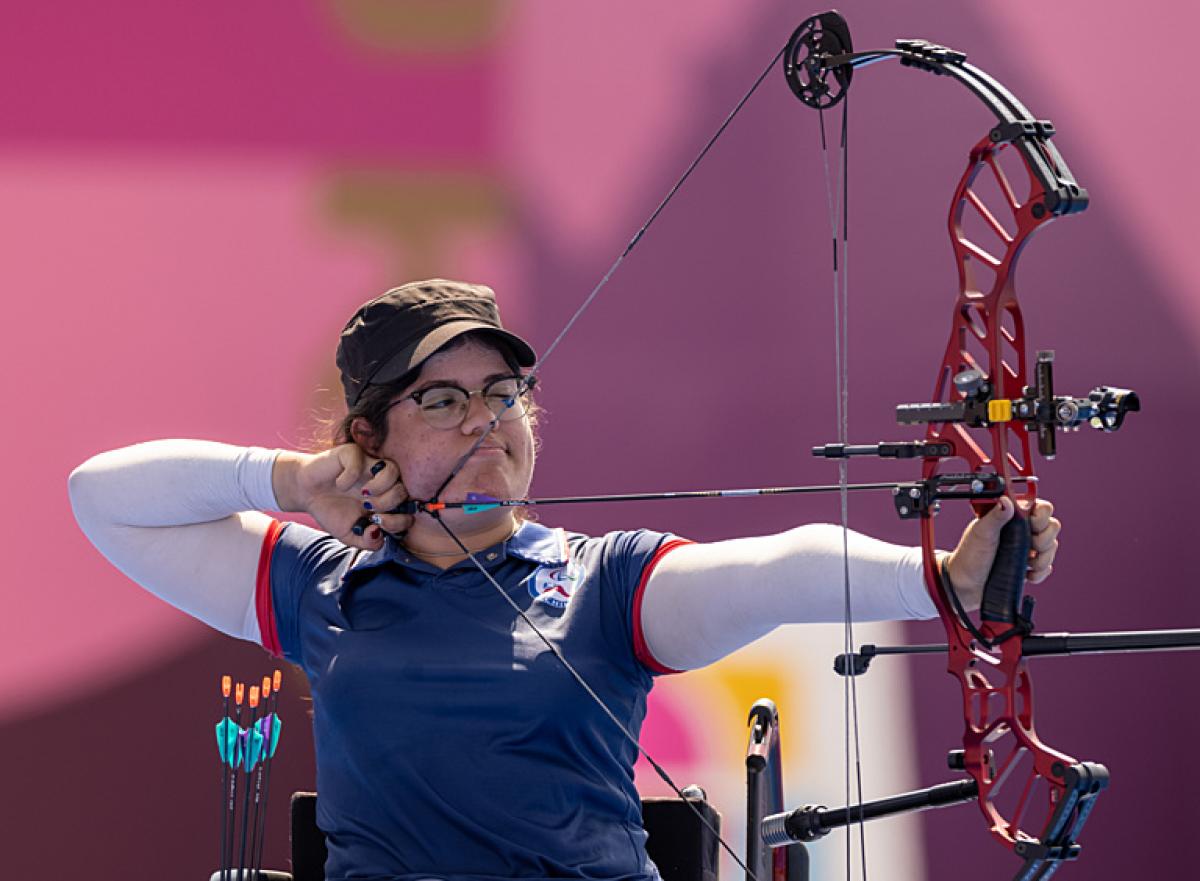
Achievements and Style: Zúñiga is known for her precision and consistency, attributes that have earned her numerous accolades in regional and international competitions. Her ability to maintain focus and deliver under high-pressure situations makes her a formidable opponent. In recent years, Zúñiga has consistently performed well in events like the World Para Archery Championships and other international meets, often finishing among the top competitors. Her technical prowess, combined with her calm demeanor, positions her as a strong contender for medals in Paris.
2024 Paralympic Outlook: As Zúñiga prepares for the 2024 Paralympics, she is focused on honing her skills and refining her strategies. Her experience in international competitions and her strong track record make her one of the favorites in her category. Fans and competitors alike will be watching her closely as she aims for the podium.
2. Eleonora Sarti (Italy)
Profile and Background: Eleonora Sarti is a celebrated para-archer from Italy, known for her aggressive shooting style and versatility. Sarti has been a staple in international para-archery for several years, showcasing her ability to adapt to various competition conditions and consistently perform at a high level. Her passion for archery is evident in her dedication to training and her involvement in promoting the sport.

Achievements and Style: Sarti’s career is highlighted by numerous successes, including podium finishes at the World Para Archery Championships and strong showings in the European Para Archery Circuit. Her aggressive approach to shooting, characterized by quick releases and sharp accuracy, sets her apart from her peers. Sarti’s ability to adjust her technique based on weather conditions and other environmental factors has also contributed to her success on the international stage.
2024 Paralympic Outlook: Heading into the 2024 Paralympics, Sarti is expected to be a key player for Italy. Her experience, coupled with her aggressive style, makes her a tough competitor to beat. Sarti’s determination and focus will be critical as she competes for one of the top spots in Paris. Her role as a role model for aspiring para-archers adds to her stature, making her performances at the Games highly anticipated.
3. Tanja Helle (Germany)
Profile and Background: Tanja Helle is a seasoned para-archer from Germany, known for her technical skills and calm demeanor. Helle has been a consistent performer in the para-archery circuit, bringing a wealth of experience and a strategic approach to her competitions. Her reputation as a skilled and reliable archer makes her a formidable competitor.

Achievements and Style: Throughout her career, Helle has earned recognition for her ability to perform under pressure, particularly in elimination rounds where precision is key. She has secured numerous medals in European and world-level competitions, often praised for her technical execution and strategic planning. Helle’s shooting style is marked by careful aim and steady release, ensuring high accuracy even in challenging conditions.
2024 Paralympic Outlook: As Helle prepares for the 2024 Paralympics, her focus will be on leveraging her experience and refining her technique. Her track record suggests that she will be a strong contender in her category, with a solid chance of medaling. Helle’s ability to stay calm and composed will be an asset as she competes against the best in the world.
4. Claire Grundy (Great Britain)
Profile and Background: Claire Grundy is a para-archer from Great Britain, known for her determination and positive attitude. Grundy’s journey in archery began as a means of rehabilitation and quickly turned into a passion that propelled her to the international stage. Her commitment to the sport and her consistent performances have earned her respect and admiration.

Achievements and Style: Grundy has represented Great Britain with distinction, competing in numerous international tournaments and championships. Her strength lies in her resilience and adaptability, qualities that have helped her achieve success in high-pressure situations. Grundy’s shooting style is characterized by a balanced approach, combining precision with controlled power.
2024 Paralympic Outlook: Grundy’s preparations for the 2024 Paralympics involve intensive training and strategic planning. Her experience and positive mindset will be crucial as she competes against a strong field of international para-archers. Grundy’s performances in Paris are expected to be a highlight for the British para-archery team.
5. Li Xianfeng (China)
Profile and Background: Li Xianfeng is a prominent para-archer from China, known for his consistency and ability to perform under pressure. Li’s dedication to archery has made him a key figure in China’s para-archery scene, with a strong track record in both national and international competitions.

Achievements and Style: Li has consistently demonstrated his skills at major events, earning accolades for his accuracy and calmness in high-stakes situations. His achievements include top finishes at the World Para Archery Championships and other prestigious tournaments. Li’s shooting style focuses on precision and consistency, with a methodical approach that ensures reliability across different rounds of competition.
2024 Paralympic Outlook: As Li Xianfeng prepares for the 2024 Paralympics, his focus will be on maintaining his form and continuing to refine his technique. His consistency and experience make him a serious contender for medals in Paris. Li’s presence in the competition adds to the depth and excitement of the field, as he represents the strength and capability of Chinese para-archery.
Conclusion
As the 2024 Paralympics approach, these para-archers are poised to make a significant impact in the archery events. Their talent, dedication, and competitive spirit will undoubtedly contribute to the excitement and drama of the Games. From Mariana Zúñiga’s precision and Eleonora Sarti’s aggressive style to the calm composure of Tanja Helle, Claire Grundy, and Li Xianfeng, each of these athletes brings a unique set of skills that will captivate audiences and inspire fellow athletes. The world will be watching closely to see how these stars perform in Paris, where the spirit of competition and the pursuit of excellence will be on full display.
